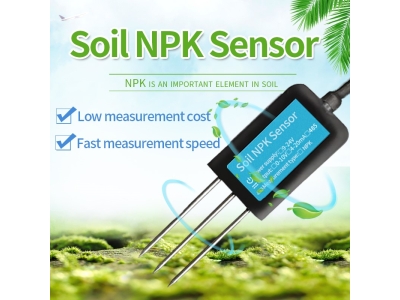Soil health is a critical component of sustainable agriculture, supporting robust plant growth and productivity while promoting environmental resilience. However, assessing soil health can be challenging, as numerous factors influence the complex interplay of physical, chemical, and biological processes that occur within the soil. Traditional assessments often rely on visual observations and general assumptions, which may not accurately reflect the actual conditions of the soil. Fortunately, advancements in technology have paved the way for a revolutionary change in soil health assessment through the use of soil sensors. In this article, we will explore how these innovative tools are transforming our understanding of soil health by providing insights into crucial factors such as moisture content, nutrient levels, pH, and microbial activity.

Understanding Soil Sensors
Soil sensors are sophisticated devices that measure various parameters within the soil, providing real-time data on crucial factors such as moisture content, temperature, nutrient levels, pH, and salinity. These sensors are typically embedded in the ground at different depths or strategically placed throughout the field to capture a comprehensive picture of soil conditions. The collected data is then transmitted wirelessly to a central system for analysis and interpretation.
Optimizing Irrigation Practices
Water scarcity is a growing concern in many regions worldwide, making efficient water management a top priority for farmers. Soil sensors play a vital role in optimizing irrigation practices by providing accurate information about soil moisture levels. By monitoring the soil's water content in real time, farmers can precisely determine when and how much water to apply, minimizing waste and reducing the risk of overwatering or underwatering crops. This not only conserves water resources but also enhances crop health and productivity.
Fine-Tuning Nutrient Management
Proper nutrient management is essential for healthy plant growth and high crop yields. Traditionally, farmers have relied on standardized fertilizer application rates without considering the specific nutrient requirements of each field or crop. Soil sensors revolutionize this approach by providing detailed insights into the nutrient composition of the soil. With this information, farmers can tailor their fertilizer application to match the precise needs of their crops, optimizing nutrient uptake and minimizing excess fertilizer usage. This not only improves crop quality but also reduces nutrient runoff, which can contribute to water pollution.
Monitoring Soil Health
Soil health is a critical component of sustainable agriculture. Healthy soil supports robust root development, enhances nutrient cycling, promotes beneficial microbial activity, and improves water infiltration. Soil sensors enable farmers to monitor key indicators of soil health, such as organic matter content and pH levels. By regularly assessing these parameters, farmers can make informed decisions regarding soil amendments, cover cropping, and other practices that promote soil fertility and resilience. Ultimately, this leads to improved long-term productivity and reduced reliance on synthetic inputs.
Detecting Pest and Disease Risks
Early detection of pest infestations and diseases is crucial for effective management and prevention of crop damage. Soil sensors can assist in this regard by monitoring environmental conditions that are favorable for pest and disease development. For example, certain sensors can measure soil temperature and humidity, allowing farmers to identify conditions conducive to fungal diseases or insect outbreaks. By receiving timely alerts, farmers can implement targeted interventions, such as spraying appropriate pesticides or adjusting irrigation practices, thereby minimizing crop losses and reducing reliance on broad-spectrum chemicals.
Enhancing Data-Driven Decision Making
The wealth of data provided by soil sensors empowers farmers to make informed, data-driven decisions. Advanced analytics and machine learning algorithms can process the collected data, generating valuable insights and recommendations. For instance, predictive models can forecast optimal planting times, predict crop yields based on soil conditions, and suggest customized irrigation and fertilization plans. By leveraging this information, farmers can optimize resource allocation, maximize productivity, and reduce costs.
Overcoming Challenges
While advanced soil sensor solutions offer tremendous potential, there are challenges to their widespread adoption. Cost remains a significant barrier for many farmers, particularly those operating on small scales or in economically disadvantaged regions. However, as technology continues to advance and economies of scale are achieved, the cost of soil sensors is expected to decrease, making them more accessible to a broader range of farmers.
Furthermore, ensuring the accura






